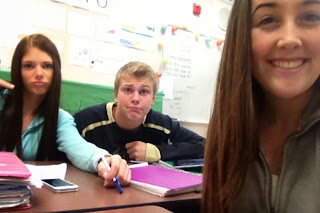By: Aliezah Hulett, Angela Chavez, Claire LoCicero
What is a semicolon?
A semicolon (;) is a mark of punctuation that is used to connect independent clauses and show a closer relationship than a period. It indicates a pause typically between two main pauses that is more pronounced than that indicated by a comma.
Rule 1: Use a semicolon in place of a period to separate two sentences where the conjunction has been left out.
Example: Call me tomorrow; I will tell you if I can hang out.
Rule 2: It is preferable to use a semicolon before introductory words such as namely, however, that is, i.e., for example, e.g., or for instance when they introduce a complete sentence. It is also preferable to use a comma after the introductory word.
Example: In class, it is necessary to bring many supplies; for example, pencils, notebooks, paper, and a backpack.
Rule 3: Use a semicolon to separate units of a series when one of more of the units contain commas.
Example: The students attending the college come from Boise, Idaho; San Diego, California; Austin, Texas; and Forks, Washington.
Rule 4: Use a semicolon between two sentences joined by a coordinating conjunction when one or more commas appear in the first sentence.
Example: When I finish here, I will be glad to help you; and that is a promise I will keep.






















